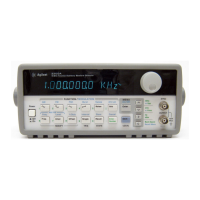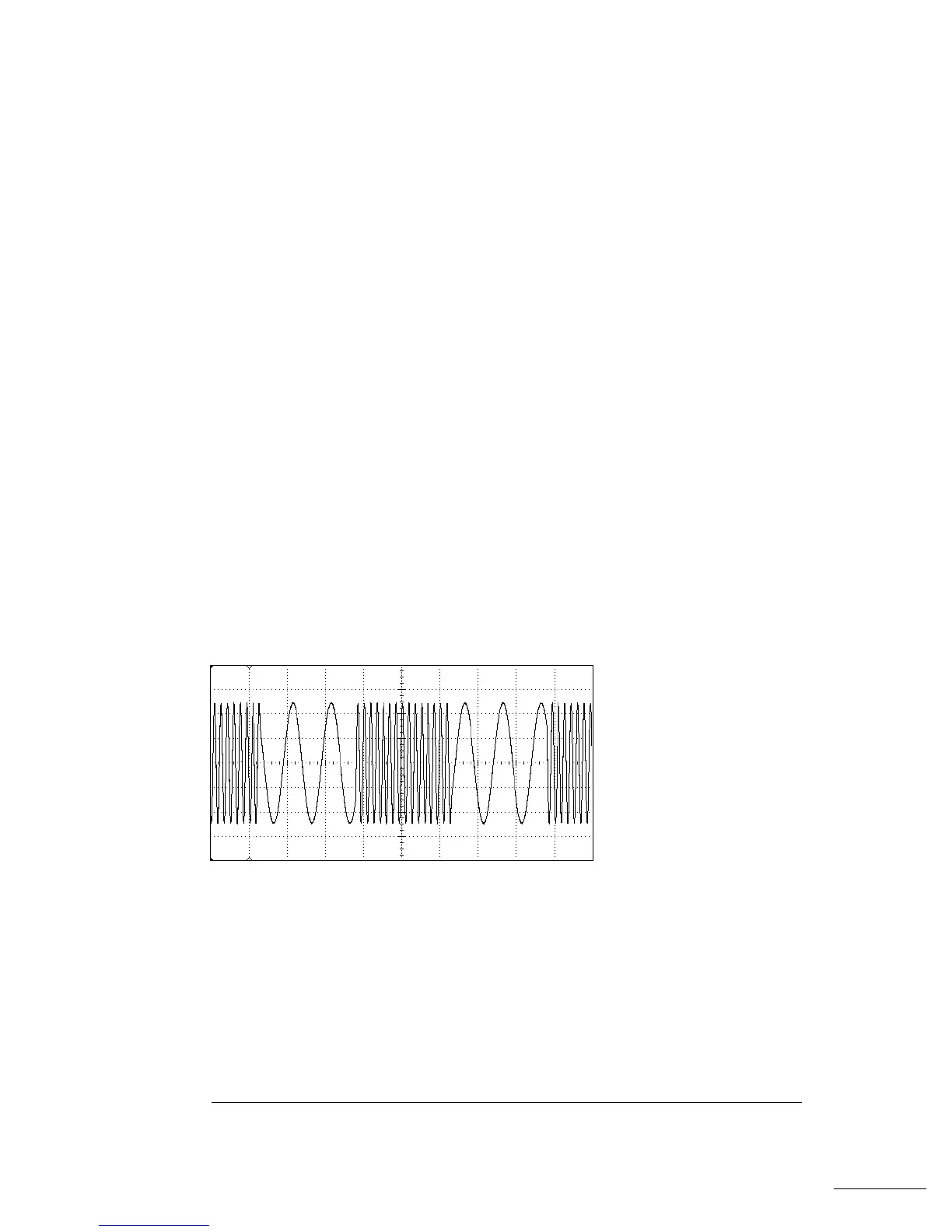Frequency Shift Key Modulation In Frequency-Shift Keying
modulation (FSK), the function generator’s output frequency alternates
between the carrier frequency and a second “hop” frequency. The rate of
frequency hops is controlled either by an internal source or from an
external logic input.
FSK is essentially a special case of frequency
modulation (
FM) where the hop frequency is another way of specifying
both the deviation and the modulating signal shape.
The modulating signal shape is always a square wave with an
amplitude of zero to +1. The deviation is either positive or negative
depending on whether the hop frequency is larger or smaller than the
present carrier frequency (as shown below). The internal
FSK rate
generator specifies the period of the modulating square wave signal.
When selected, the external
FSK input replaces the internal FSK rate
generator to directly control the frequency hop rate. A
TTL “low” input
always selects the carrier frequency and a
TTL “high” always selects the
hop frequency. The logic sense of the external
FSK input can effectively
be changed by interchanging the carrier and hop frequency values.
Deviation = Hop Frequency – Carrier Frequency
An FSK waveform with a 3 kHz carrier waveform and 500 Hz
“hop” waveform (the FSK rate is 100 Hz).
Chapter 7 Tutorial
Modulation
290

